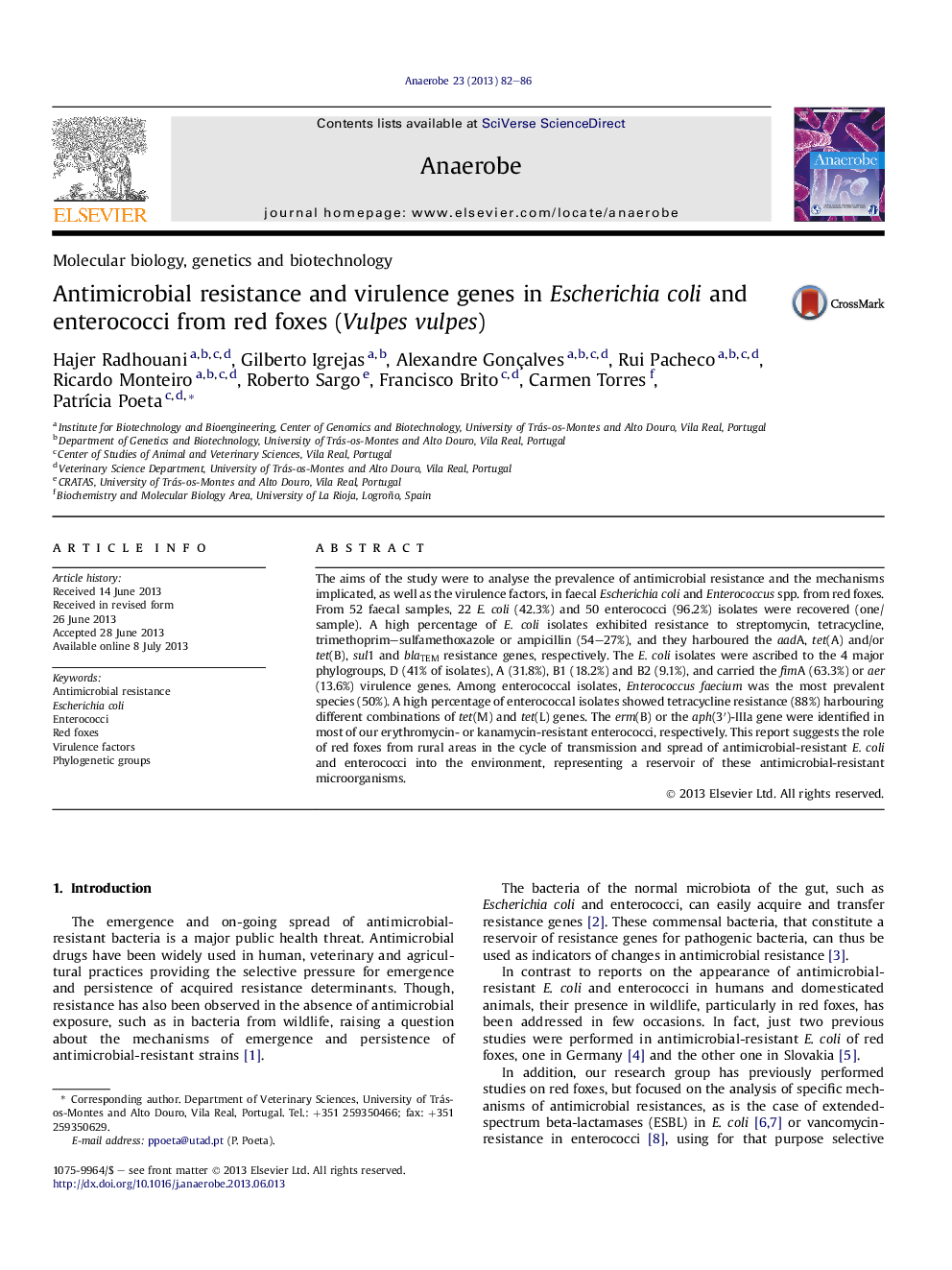| Article ID | Journal | Published Year | Pages | File Type |
|---|---|---|---|---|
| 3395199 | Anaerobe | 2013 | 5 Pages |
•From 52 faecal samples of red foxes 22 E. coli and 50 enterococci isolates were recovered.•Antimicrobial resistance, phylogenetic groups and virulence factors were analyzed.•A high occurrence of multiresistant E. coli and enterococci was detected.•Majority of the E. coli carrying the fimA and aer genes belonged to phylogroups D.•Foxes could be a reservoir of multiresistant isolates which reveals an ecological health problem.
The aims of the study were to analyse the prevalence of antimicrobial resistance and the mechanisms implicated, as well as the virulence factors, in faecal Escherichia coli and Enterococcus spp. from red foxes. From 52 faecal samples, 22 E. coli (42.3%) and 50 enterococci (96.2%) isolates were recovered (one/sample). A high percentage of E. coli isolates exhibited resistance to streptomycin, tetracycline, trimethoprim–sulfamethoxazole or ampicillin (54–27%), and they harboured the aadA, tet(A) and/or tet(B), sul1 and blaTEM resistance genes, respectively. The E. coli isolates were ascribed to the 4 major phylogroups, D (41% of isolates), A (31.8%), B1 (18.2%) and B2 (9.1%), and carried the fimA (63.3%) or aer (13.6%) virulence genes. Among enterococcal isolates, Enterococcus faecium was the most prevalent species (50%). A high percentage of enterococcal isolates showed tetracycline resistance (88%) harbouring different combinations of tet(M) and tet(L) genes. The erm(B) or the aph(3′)-IIIa gene were identified in most of our erythromycin- or kanamycin-resistant enterococci, respectively. This report suggests the role of red foxes from rural areas in the cycle of transmission and spread of antimicrobial-resistant E. coli and enterococci into the environment, representing a reservoir of these antimicrobial-resistant microorganisms.
